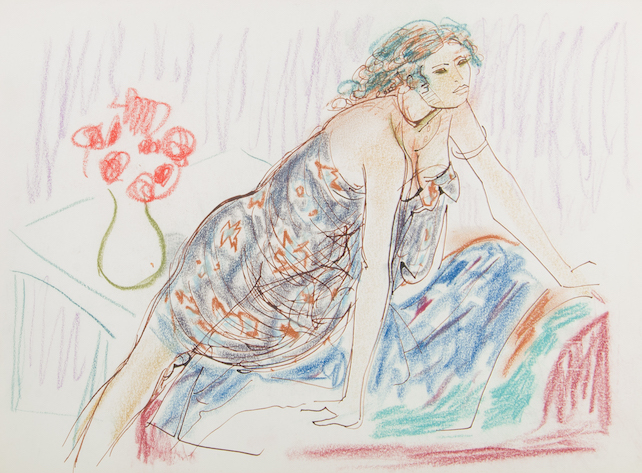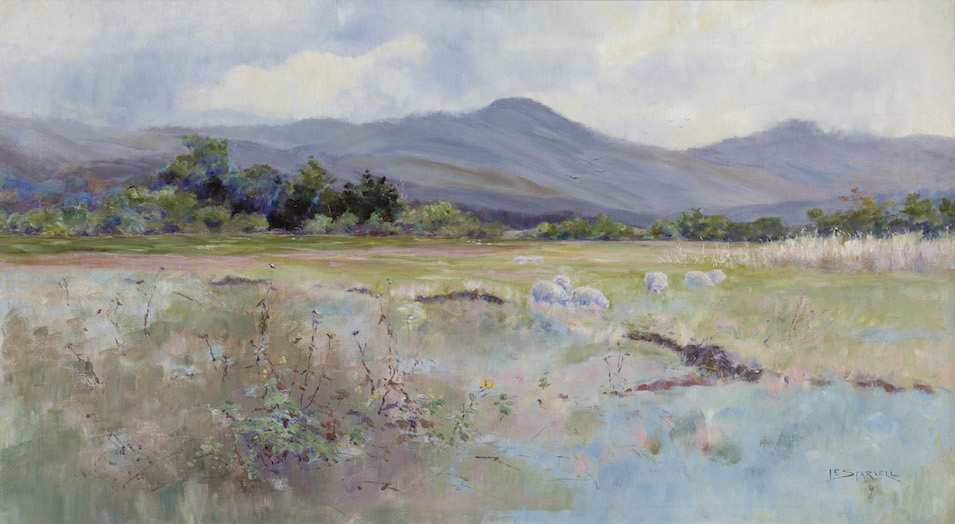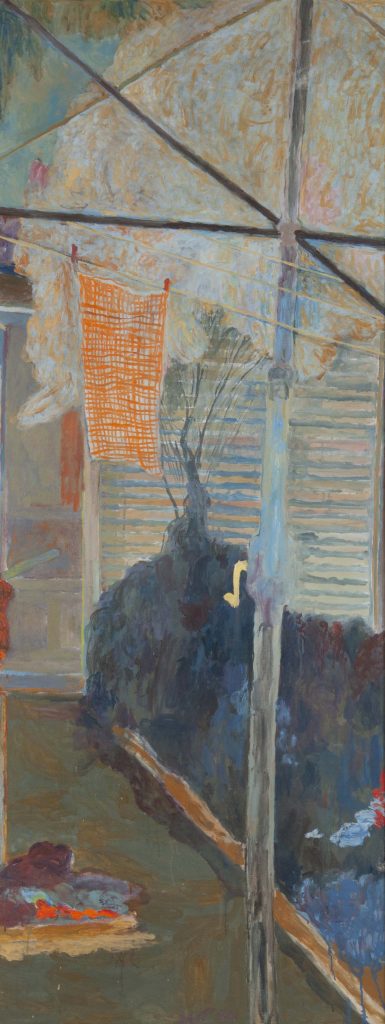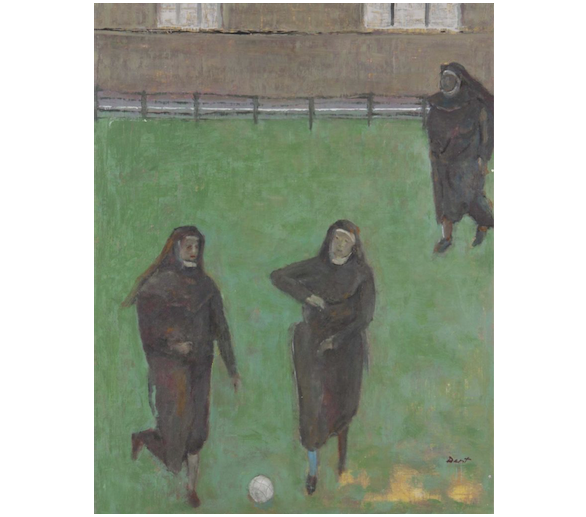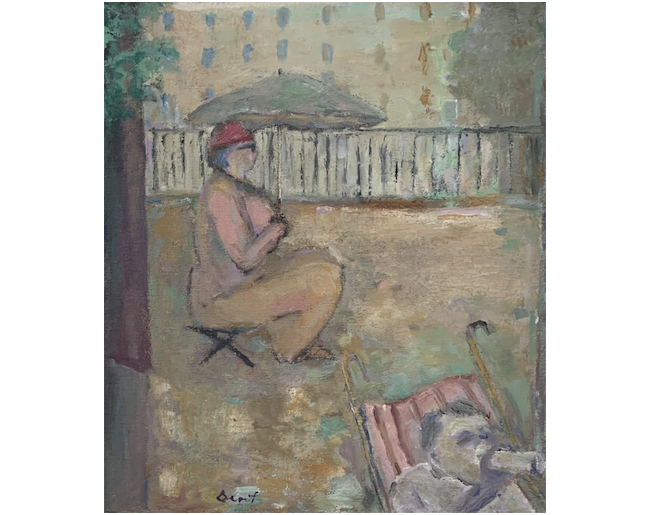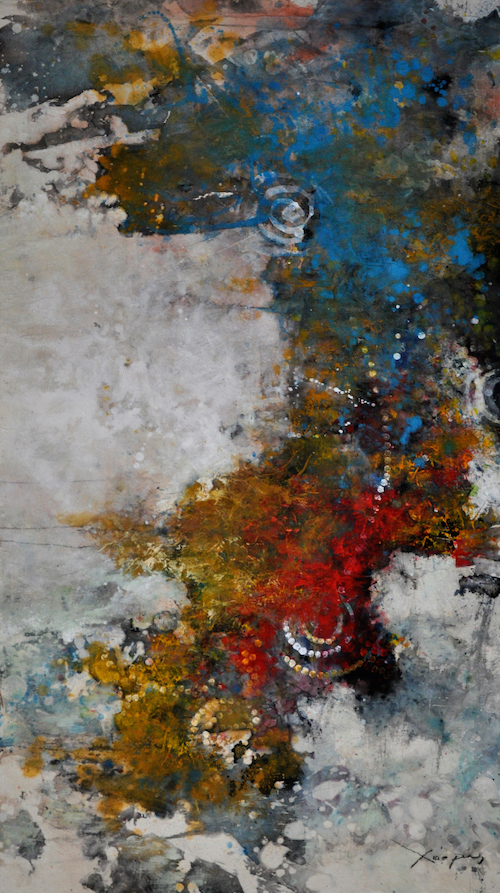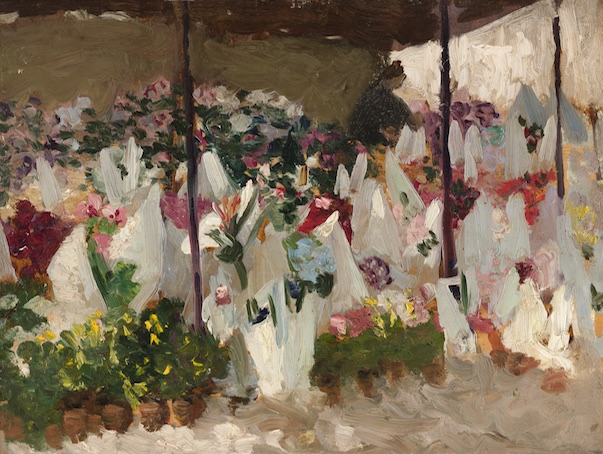It is fortuitous timing that our exhibition of paintings and works on paper by Constance Stokes coincides with International Women’s Day, celebrated on 8 March. Constance Stokes’ life represents the myriad issues facing female artists, particularly pursuing an active career as a professional artist whilst also supporting a family and fitting with societal expectations of the time. Constance Parkins was a talented and dedicated student who travelled overseas to further her artistic studies. Following classes at the Gallery School at the National Gallery of Victoria under Bernard Hall, she was awarded the Travelling Scholarship in 1929 which enabled her to continue her studies at the Royal Academy in London and in Paris in the summer of 1931 with Andre Lhote who was to have a profound influence on her. Her success as an artist was recognised with numerous exhibitions and her inclusion in the Twelve Australian Artists exhibition at Burlington Galleries, London in 1953 and at the 1953 Venice Biennale. Constance married Eric Stokes in 1933 and between 1937 and 1942 they had three children. Constance Stokes is on record as describing the difficulties of combining her career and motherhood, even with a supportive husband, admitting that each impacted the other.
Eric’s early death in 1962 forced a greater impetus to maintain her career and Stokes continued with successful exhibitions. Her paintings of women are particularly prized, their warmth and intimacy matched with bold use of colour. Her works on paper, mostly depicting women, highlight her drawing skill and lyrical line.
As Dr Juliette Peers noted in the catalogue essay for our exhibition:
“For Stokes, as recounted in interviews, the driving factors of her art were her imagination, her sense of design, and, increasingly at the end of her career, revisiting and reinterpreting her own previous works and studies. “Actually, most of my paintings are from imagination or memory.“[i] Women stand at the centre of her imagery, as she said “the woman takes first place”.[ii] Many of the works in this present collection reflect her preference for portraying women. Her female studies became particularly important during the later phase of her career, when she, in effect, rebuilt her practice and her confidence after the early death of her husband in 1962. At this date Stokes faced a very different and not always congenial artistic, social and political world to the one in which she first found fame. Her response to these changing times and practices was to heighten her colour and simplify her compositions. “ Juliette Peers, Constance Stokes 1906 – 1991, catalogue essay for Lauraine Diggins Fine Art exhibition, 2021
It is fitting on International Women’s Day that we recognise the talents of Constance Stokes, as a woman, as well as celebrate her depictions of women.
Learn more about Constance Stokes on our exhibition page where you can enjoy viewing the artworks, accessing the catalogue with essay by Dr Juliette Peers and listen to Dr Gerard Vaughan discussing the exhibition and Constance Stokes oeuvre. The exhibition is showing until 31 March 2022.

